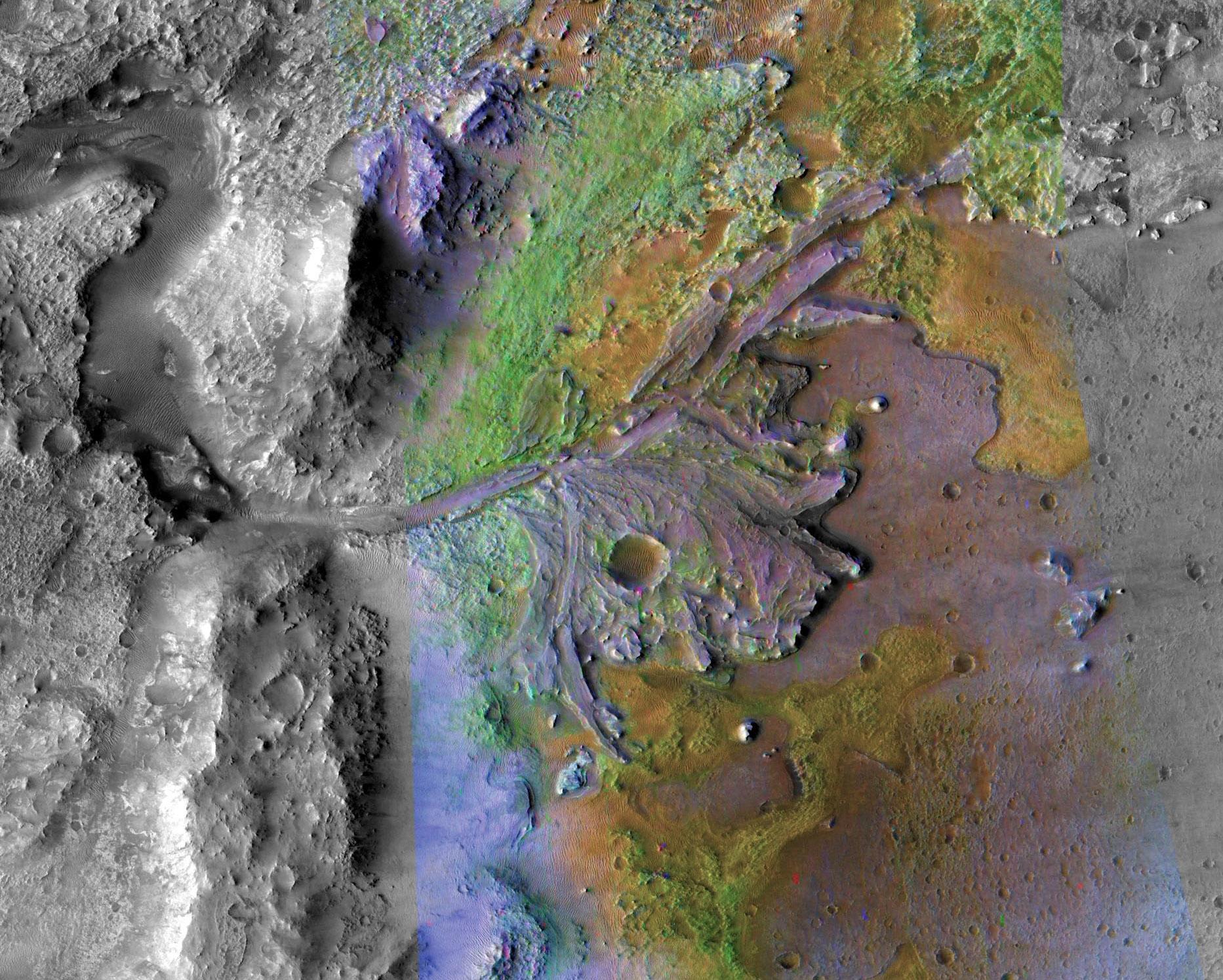
|
Jezero Crater, Mars 2020’s Landing Site
- Click the image above for a larger view
- Full-Res JPEG (1865 x 1495) (550.2 kB)
- Full-Res TIFF (1865 x 1495) (8.3 MB)
Caption:
This image is of Jezero Crater on Mars, the landing site for NASA's Mars 2020 mission. It was taken by instruments on NASA's Mars Reconnaissance Orbiter (MRO), which regularly takes images of potential landing sites for future missions.
On ancient Mars, water carved channels and transported sediments to form fans and deltas within lake basins. Examination of spectral data acquired from orbit show that some of these sediments have minerals that indicate chemical alteration by water. Here in Jezero Crater delta, sediments contain clays and carbonates.
Background Info:
The image combines information from two instruments on MRO: the Compact Reconnaissance Imaging Spectrometer for Mars (CRISM) and the Context Camera (CTX). The Johns Hopkins University Applied Physics Laboratory in Laurel, Maryland, led the work to build the CRISM instrument and operates CRISM in coordination with an international team of researchers from universities, government and the private sector. Malin Space Science Systems in San Diego built and operates CTX.
NASA's Jet Propulsion Laboratory, a division of Caltech in Pasadena, California, manages the Mars Reconnaissance Orbiter Project for NASA's Science Mission Directorate, Washington. Lockheed Martin Space Systems, Denver, built the orbiter and collaborates with JPL to operate it.
Cataloging Keywords:
| Name | Value | Additional Values |
|---|---|---|
| Target | Mars | |
| System | ||
| Target Type | Planet | |
| Mission | Mars Reconnaissance Orbiter (MRO) | |
| Instrument Host | Mars Reconnaissance Orbiter | |
| Host Type | Orbiter | |
| Instrument | Compact Reconnaissance Imaging Spectrometer for Mars (CRISM) | Context Camera (CTX) |
| Detector | ||
| Extra Keywords | Color, Crater, Water | |
| Acquisition Date | ||
| Release Date | 2019-05-15 | |
| Date in Caption | ||
| Image Credit | NASA/JPL-Caltech/MSSS/JHU-APL | |
| Source | photojournal.jpl.nasa.gov/catalog/PIA23239 | |
| Identifier | PIA23239 | |
